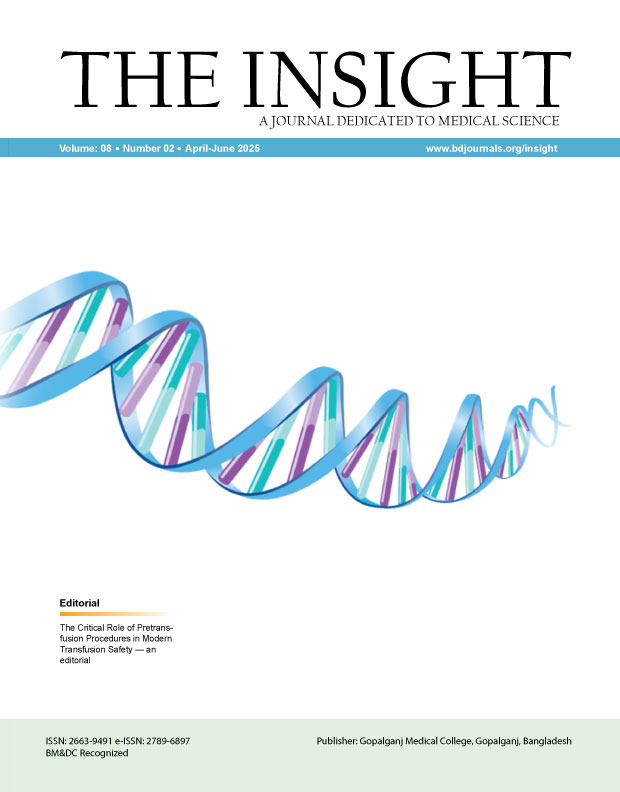Abstract
Background: Tibial shaft fractures are among the most common long bone fractures with high incidence in young adults. Intramedullary nailing is the gold standard of fixation, and the suprapatellar approach has gained popularity due to technical advantages. Evidence on functional outcomes in closed fractures is still lacking, however. Objectives: The aim of this study was to assess the functional outcomes of closed tibial shaft fractures treated with suprapatellar intramedullary nailing. Methods & Materials: This prospective observational study was conducted in the Department of Orthopaedics, National Institute of Traumatology and Orthopedic Rehabilitation (NITOR), Sher-E-Bangla Nagar, Dhaka, Bangladesh, for one year period from March 2022 to March 2023. Total 33 adult patients with closed tibial shaft fractures were enrolled. Results: In this study, mean age was 38.3 ± 11.6 years with male predominance (69.7%). Fractures of AO type 42A were most common (54.5%). The mean knee ROM at last follow-up was 130.3 ± 8.6°. The majority of patients (72.7%) had fair functional outcomes, 18.2% good, and 9.1% poor. The average VAS was 0.5, and anterior knee pain was complained of by only 15.2%. Lysholm scores improved significantly from 83.1 at 6 months to 93.8 at 12 months (p<0.001). Conclusion: Suprapatellar nailing for closed tibial shaft fractures produces good functional outcomes, few complications, and gradual improvement, justifying its use as a safe and effective method of fixation.

This work is licensed under a Creative Commons Attribution 4.0 International License.
Copyright (c) 2025 The Insight





 PDF
PDF